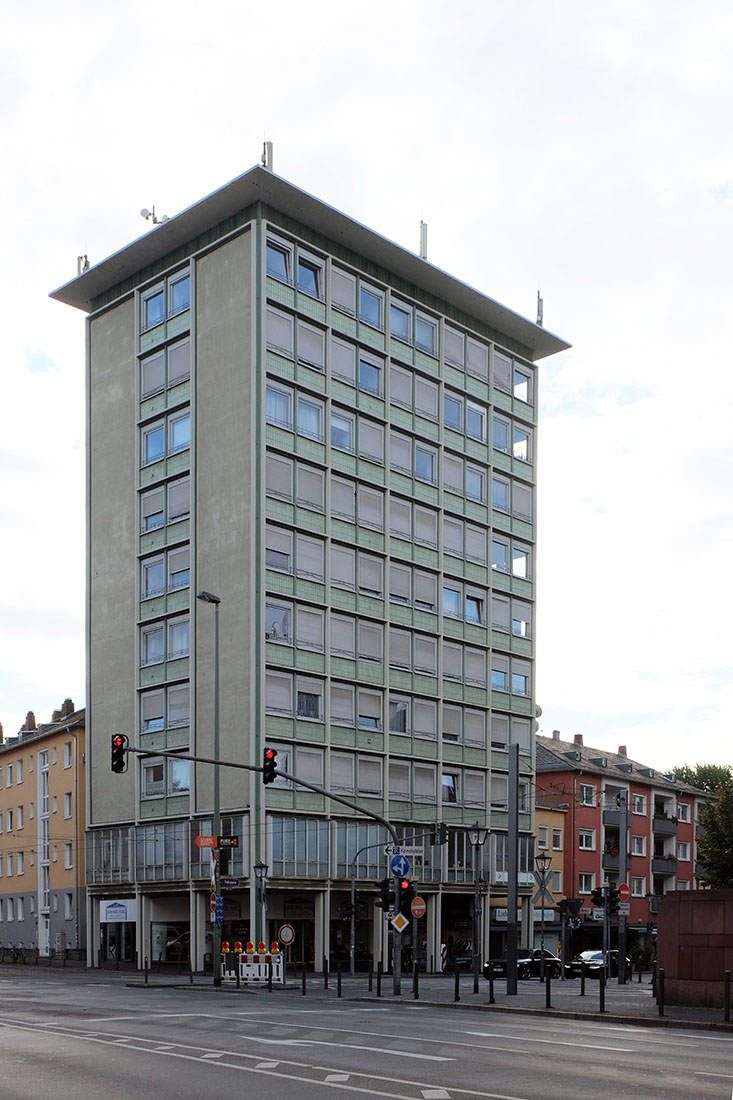 |
 |
 |
 |


Apartment Building
Fahrgasse 25, Frankfurt
1955
The first residential high-rise in Frankfurt, designed by Johannes Krahn, was to a lesser extent a sign rethinking in urban planning,
then an attempt to make a virtue out of necessity. Originally the apartment block on the Fahrgasse should have become
an office building, but the property developer were at odds with each other even before completion of the building.
Instead of the planned offices there have been set up one- and two-room apartments. With a height of 30 meters, the apartment building
was at that time the highest non-religious buildings of the historic city centre. Like other early skyscrapers of the postwar era,
it was intended to replace old landmark buildings and give the deserted street spaces a new orientation.
The building is set out of alignment of the Fahrgasse and marks the corner to the new east-west connection, the Berliner Strasse.
According to the US american high-rise building tradition, the so-called NEFF-skyscraper, is composed out of three parts.
In the arcades of the ground floor are shops, followed by a mezzanine floor with commercial premises, which stand out clearly from the
overlying residential floors, through its circumferential window strip. The roof zone consists, as was common in the high-rise constructions
of this time, out of a reset eave under a cantilevered flat roof. The uniformity predetermined by the grid of the steel skeleton structure corresponded
to the equivalence of tenants and thus with the social reformist ideal of the rebuilding-era architecture. The high percentage of windows
meets the demand for light and air, which is one of the important principles of modern architecture.
Nevertheless, it was not possible to persuade the population from living in high-rise buildings. On the contrary, the grid facade with green-clad parapet areas
earned him the nickname "monkey-house". Coinciding with this building Johannes Krahn realized the German Embassy in New Delhi,
the first German embassy construction after the founding of the German Federal Republic.